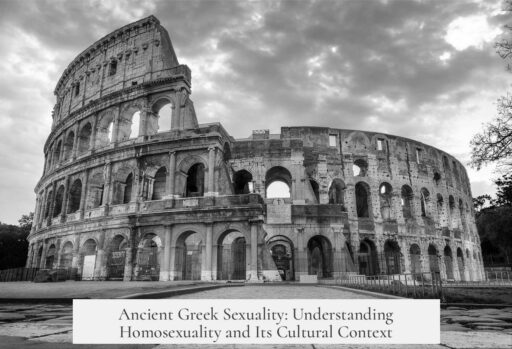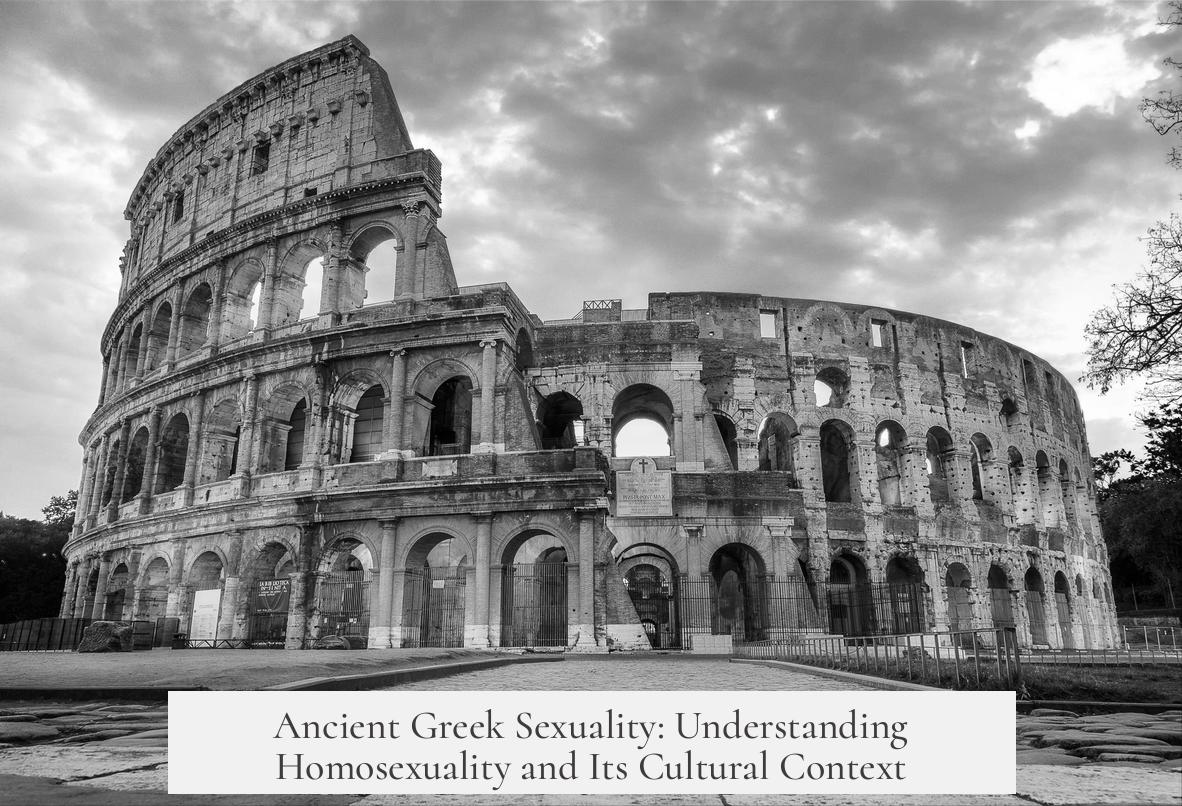Ancient Greece cannot be accurately described simply as “gay” in the modern sense; rather, homosexual relationships existed in specific social contexts and carried different meanings than today’s concept of sexual identity.
In Ancient Greece, homosexual behavior was recognized and somewhat common, yet it followed particular social frameworks. It was not a universal norm but accepted within certain limits.
Modern views of sexuality often focus on fixed identities like “gay,” “straight,” or “bisexual,” understood as consistent preferences over a lifetime. Ancient Greeks lacked such identity categories. Instead, sexuality was seen as behavior linked to social roles, status, and age groups rather than a personal, fixed orientation.
The best-known example of homosexuality in Ancient Greece is the institutionalized practice of pederasty. This involved an adult male called the erastes and a younger male adolescent, or eromenos. The erastes served as a dominant lover and mentor, while the eromenos was the younger beloved, usually pre-pubescent or adolescent. This relationship combined sexual activity with mentorship and education. The eromenos role ended when the youth matured and grew a beard, typically signaling readiness for traditional adult responsibilities.
Ancient Greek art visually distinguished these roles, depicting the erastes with a beard and the eromenos as clean-shaven. Sexual acts like intercrural sex—penetration between the thighs—were common. Penetrative sex was socially taboo for the younger partner, as it signified a loss of honor.
The relationships, however, were never permanent sexual identities. Men engaged in pederastic relations typically married women and fulfilled societal expectations of family and procreation. Thus, involvement in same-sex relations did not label a man as “gay” in the modern understanding.
Beyond pederasty, other forms of same-sex behavior existed but were less institutionalized. Some adult men engaged in homosexual relations with slaves or male prostitutes. Such cases were rarer and sometimes viewed as socially questionable. Named historical figures like Pausanias and Agathon are recorded to have had homosexual relationships outside the pederastic model.
Ancient Greek philosophy, including works like Plato’s Symposium, idealized some of these bonds as forms of “pure” or noble love. Emotional connection often accompanied the physical aspect, highlighting complex understandings of affection beyond mere sex.
However, modern interpretations can misread Ancient Greek relationships by projecting today’s ideas of fixed sexual identity and romantic partnership onto historical practices. Strong male friendships with emotional closeness might be mistaken for romantic relationships, while cultural emphasis on male bonding—especially in military contexts—could exaggerate assumptions of homosexuality.
For example, male comrades in war sometimes displayed physical intimacy as part of close camaraderie rather than desire. This led to misconceptions that all male intimacy implied same-sex attraction or identity.
The key difference between Ancient Greece and modern society remains the contextual and situational nature of sexuality. Ancient Greeks accepted certain homosexual acts and relationships within defined roles and phases of life but did not categorize people as “gay” or “straight.”
Thus, labeling Ancient Greece simply as “gay” misunderstands their culture. The society recognized and incorporated homosexual relations but embedded them in complex, regulated social structures. These differences explain why modern sexual identity labels cannot be directly mapped onto Ancient Greek practices.
| Aspect | Ancient Greek Context | Modern Western Context |
|---|---|---|
| Sexual Identity | Not fixed; based on role, age, and social position | Fixed orientation identity (gay, straight, bisexual) |
| Main Homosexual Institution | Pederasty between adult men and adolescent boys | Adult same-sex relationships as identity expression |
| Duration of Relationship | Temporary; ends with youth’s adulthood | Often lifelong or long-term partnerships |
| Social Expectations | Men marry women; same-sex relations separate from family roles | Marriage or partnership aligned with orientation |
| Emotional Aspect | Philosophically idealized but within mentorship context | Emotional and romantic intimacy integral |
- Homosexual relationships existed but were socially structured and limited in Ancient Greece.
- Pederasty, linking adult men and adolescent boys, was the primary institutional form.
- Sexual identity was fluid and connected to social and age roles, not a fixed trait.
- Modern terms like “gay” do not accurately describe Ancient Greek sexuality.
- Some same-sex behaviors outside pederasty existed but were less socially accepted.
- Philosophers viewed certain same-sex bonds as expressions of noble love.
- Modern misconceptions often result from projecting contemporary views onto ancient cultures.
References include Plato’s Symposium and scholarly works such as K.J. Dover’s Greek Homosexuality and N. Holmen’s investigation of pederastic relationships. These sources provide detailed insight into the distinct cultural framework of Ancient Greek sexuality.
Was Ancient Greece Gay, or is That a Misunderstanding of Their Culture?
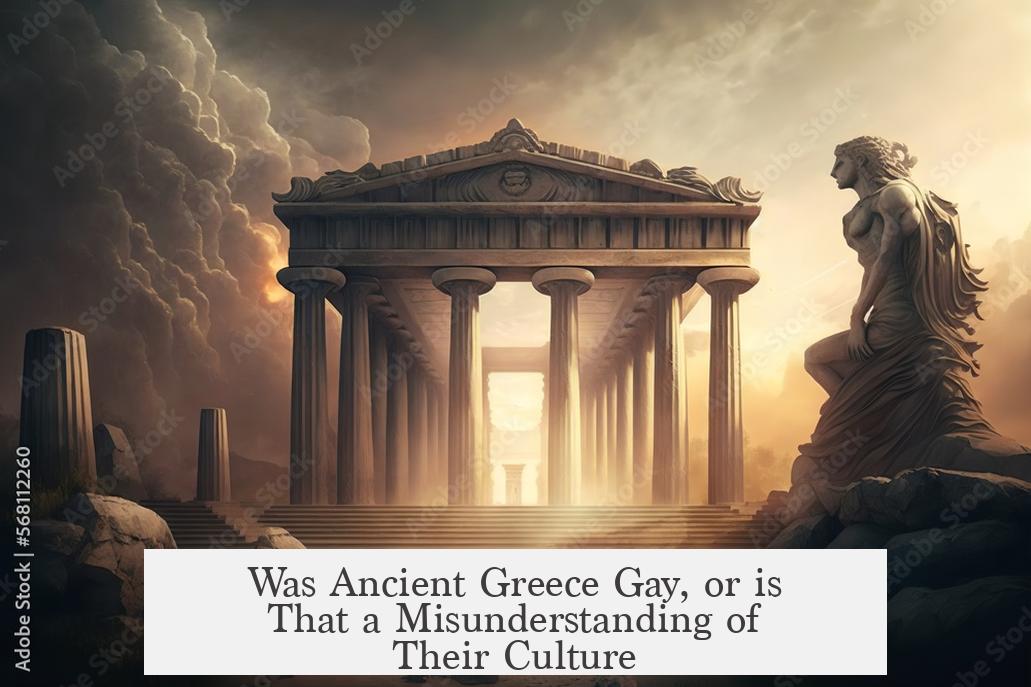
If you ask, “Was Ancient Greece gay?” the answer is yes and no. Homosexual relationships did exist and were socially recognized in specific contexts, but the way Ancient Greeks thought about sexuality sharply differs from today’s idea of sexual identity. So, calling Ancient Greece “gay” is a half-truth. It needs nuance.
Let’s peel back the robes of time and explore what sexuality really looked like in ancient Athens and beyond, avoiding modern filters that can cloud our view.
Homosexual Relationships Were Common but Contextual
Homosexual behavior in Ancient Greece was somewhat accepted, but only in particular settings. Unlike our modern idea of sexuality as a lifelong identity, Greeks viewed sexual behavior more as a function of role, age, and social class.
So, a man’s romantic actions didn’t label him ‘gay’ or ‘straight.’ Instead, they fit into expected social norms.
Modern Sexuality vs. Ancient Greek Sexuality
In our Western world, people usually think about sexuality as a core part of identity. For example, someone may say, “I am gay” or “I am bisexual” as a lifelong truth.
Ancient Greeks didn’t organize sexuality that way. They saw sexual behavior as flexible—sometimes linked to social roles and stages in life, rather than fixed categories. A man might engage sexually with women and men at different points without contradictions.
So it’s not quite accurate to say they were gay in our sense but rather that their culture included same-sex activities within specific social expectations.
The Institution of Pederasty: The Most Famous Example
When people hear “Ancient Greek homosexuality,” they probably think of pederasty. This was a common social institution, mostly among aristocrats, involving an older male lover (erastes) and a younger beloved (eromenos), typically an adolescent boy.
| Role | Description | Visual Indicator (in Art) |
|---|---|---|
| Erastes | Older, dominant male partner | Bearded face |
| Eromenos | Younger, submissive adolescent partner | Bare-faced (no beard) |
This relationship wasn’t just about sex—it conveyed mentorship, education, and passing on social values. It typically ended once the youth grew a beard and matured physically. Afterward, engaging sexually with the younger partner ceased to be socially acceptable.
How Sexuality Worked in These Relationships
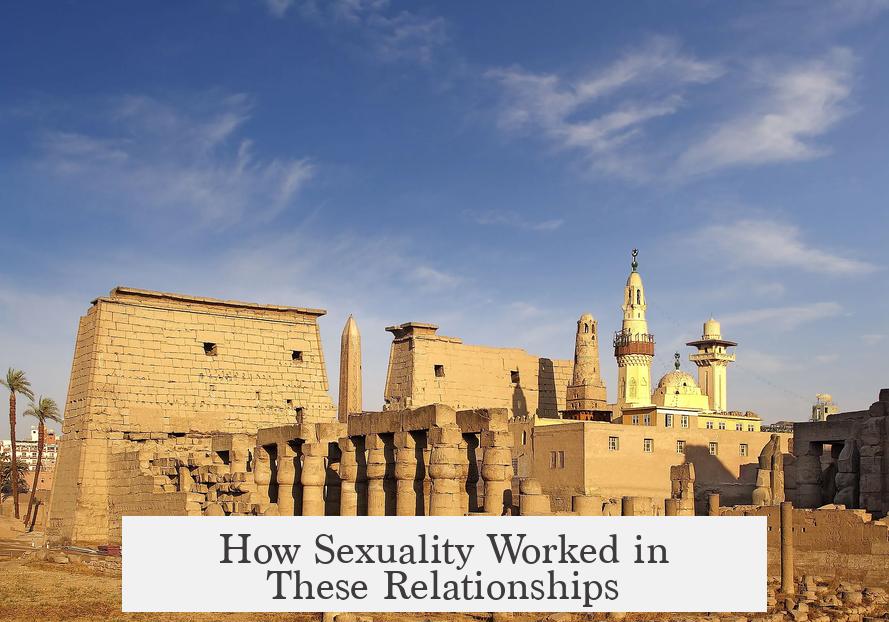
Sexual acts in pederasty were mostly non-penetrative, with “intercrural sex” (sex between the thighs) being common. Penetrative sex with the younger partner was seen as degrading.
But let’s not kid ourselves—human nature being human nature, penetrative sex probably did happen sometimes despite the taboos. Ancient Greek art and literature hint at the complexity of these relationships.
Emotional and Philosophical Dimensions: More Than Just Physical
Philosophers like Plato praised the emotional and intellectual depth of these bonds. In Plato’s Symposium, the ideal is “pure love” blossoming between erastes and eromenos, enriched by mentorship and shared wisdom.
So these relationships carried a significant philosophical weight, embodying ideals beyond mere body politics.
Differences from Modern Gay Relationships
The Greeks saw these relationships as temporary and socially functional. The erastes was expected to marry a woman and father children later. These male-male relationships didn’t mark a permanent gay or bisexual identity.
Unlike today’s concept where sexual orientation often defines personal identity, the Greek approach focused on roles and life phases—no labels like “gay” existed.
Other Homosexual Behaviors Outside Pederasty
Apart from formal pederasty, other forms of same-sex relations existed. Figures like Pausanias and Agathon engaged in adult homosexual relationships, but these were exceptions and often seen as unusual or frowned upon.
Some men chose male prostitutes or slaves for sexual encounters. Preferences varied, showing that sexuality was complex and diverse—just less boxed in by fixed identities than today.
Modern Misinterpretations and Oversexualization
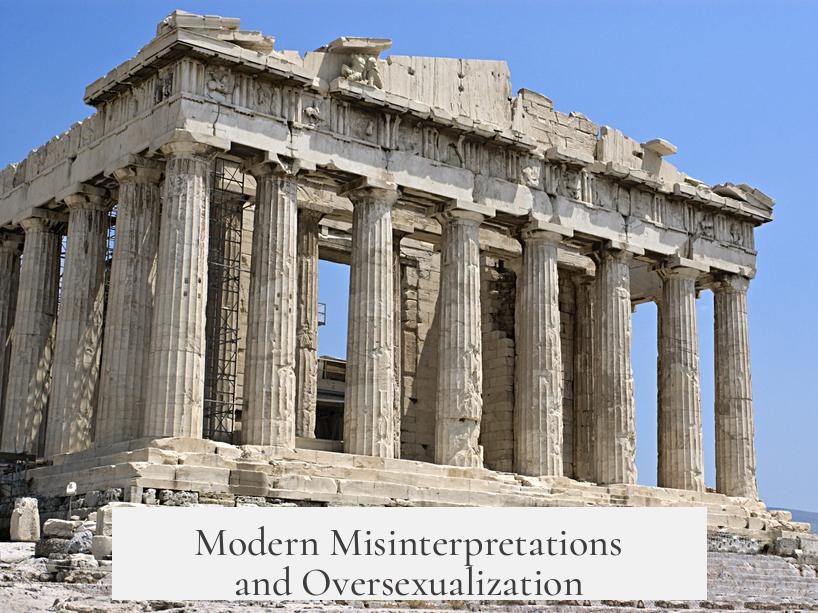
Many misunderstandings come from interpreting ancient close male friendships through our current lens. Today, two men who are very affectionate might be assumed romantic partners.
For Greeks, close male friendships were common and intense—some even described as loving like family—but not necessarily sexual.
Also, Greek culture heavily focused on men, sometimes oversexualizing male behavior in art and text. This can lead to exaggerated assumptions about Greek homophobia or homosexuality.
One scholar jokes it’s like imagining your war buddies kissed and gave each other handjobs over a dare—not the norm, just a quirky fellowship moment!
Summary: The Real Picture
So what’s the takeaway? Homosexual behavior in Ancient Greece definitely existed and was normalized in certain frameworks. But it was regulated, conditional, and layered with cultural meaning unlike today’s understanding of sexual identity.
It wasn’t a gay utopia, nor a culture oblivious to sexual lines—it simply had a distinct system of sexual norms integrating age, social roles, and expectations, which don’t map neatly onto modern LGBTQ+ concepts.
Calling Ancient Greece “gay” without context simplifies a fascinating cultural complexity. Understanding Greek sexuality requires seeing it as a unique blend of mentorship, social order, and love, not just through the narrow prism of modern labels.
Practical Takeaway for Today’s Curious Minds
- If you’re reading about Ancient Greece and encounter references to male-male relationships, remember they were tied to social roles, not sexual identities as we know them.
- Ancient Greek pederasty was an institution combining sex, education, and social bonds, mostly temporary and culturally regulated.
- Modern assumptions about sexuality don’t apply seamlessly to ancient cultures. Consider context before applying labels.
- Curious about art or literature? Look for clues like the beard to identify roles like erastes vs. eromenos.
- Always respect that other cultures’ concepts of sexuality can differ broadly and can’t be judged only by contemporary standards.
Further Reading
For those eager to dive deeper:
- Symposium by Plato (Translation by Robin Waterfield) explores philosophical ideas of love and relationships.
- K.J. Dover’s Greek Homosexuality (1978) is a classic study unpacking social meanings of sexuality in ancient Greece.
- Nina Holmen’s article, “Examining Greek Pederastic Relationships” (2010), offers modern academic insights into these dynamics.
So, next time someone asks if Ancient Greece was “gay,” you can smile, sip your ouzo, and say: “Well, that depends how you define gay…”
Q1: Were same-sex relationships in Ancient Greece considered permanent identities like modern gay or bisexual labels?
No, Ancient Greeks did not view sexuality as a fixed identity. Relationships were linked to social roles and life stages, not lifelong sexual orientation.
Q2: What was the social role of pederasty in Ancient Greece?
Pederasty paired an adult male with an adolescent boy. It combined mentorship, education, and sexual aspects, ending when the younger partner reached adulthood.
Q3: Did adult Greek men in same-sex relationships typically marry women?
Yes, men in such relationships usually married women and fulfilled traditional family roles. Same-sex relations did not conflict with heterosexual marriage expectations.
Q4: Were all homosexual relationships accepted equally in Ancient Greece?
No, pederasty was socially recognized, especially among elites. Other same-sex relationships, like between adult men, were rarer and sometimes viewed as strange.
Q5: How do modern views often misinterpret Ancient Greek male relationships?
Modern culture can confuse close male friendships with romantic partnerships. Ancient Greeks often had close, non-sexual bonds seen as familial love, not necessarily romantic.
